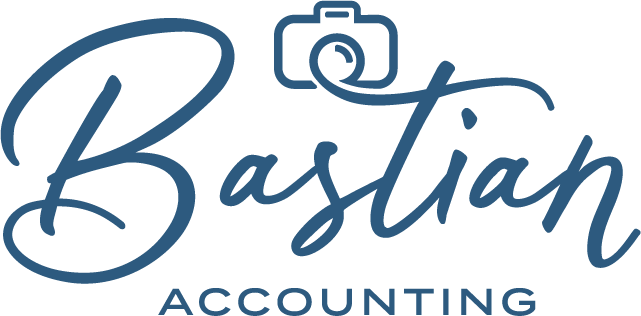Gifts for Contractor and Employees (what’s deductible and what’s not)
Related blogs
The Gift Rule
We cover the $25 per person per year gift rule in a separate post you can read HERE
This blog post will focus on gifts for employees and contractors. Showing appreciation to your team, particularly during special occasions such as holidays, birthdays, and work anniversaries, is essential. However, it is important to note that the IRS may consider taxing some of these additional benefits because of our business relationship. Fortunately, they may also choose to exempt certain benefits from taxation.
Gifts To Contractors
Non-Cash
Noncash or cash equivalent gifts to contractors follow the gift rule of $25 per person annually. (read more here)
Cash
Cash or equivalent gifts (gift cards and items that can be turned to cash quickly) are reportable on the contractor’s 1099 form as supplementary compensation for their services.
Gifts To Employees
Non-Cash
Noncash or cash equivalent gifts to contractors follow the same gift rule of $25 per person per year. (read more here)
Cash
Cash or equivalent gifts (gift cards and items that can be turned to cash quickly) are always reportable on the employee’s W-2 unless it is an achievement award (defined below)
Achievement Awards
One potential situation in which employers can give their employees cash or cash equivalent gifts with no tax implications to the employee is for awards. Employee achievement, service, and safety awards are typically not taxable up to a certain amount. The award must meet a series of stipulations as provided by the IRS, but generally, if the award is less than $400, you, as the employer, can deduct the expense from your taxes, and the employee doesn’t have to list the award as income on their taxes. (IRS Publication 535: Business Expenses)
Bonuses
A bonus is another way to show appreciation for your employees or contractors. Be aware that all bonuses are tax deductible for your business but reportable to the receiver, so this must also be included on the employee W-2 or contractor 1099.
Fringe Benefits
Employees
Fringe benefits are additional perks or advantages employees receive from their employers alongside their regular salary or wages. These benefits go beyond monetary compensation, enhancing the overall work experience, contributing to employee well-being, and promoting job satisfaction. Here are common examples of fringe benefits:
Health Insurance
Retirement Plans
Paid Time Off (PTO)
Flexible Spending Accounts (FSAs)
Life Insurance
Fringe benefits are all reportable on the employee’s W-2; therefore, the employer can deduct such benefits.
Contractors
They file as self-employed on their own taxes and are therefore responsible for paying their own social security, medicare, and other applicable taxes. An employer can offer benefits to a 1099 employee, but they're not required to do so.
De Minimis Fringe Benefits
"De minimis" is a Latin term that translates to "of minimal concern" or "trifling." In various legal contexts, including tax law, it refers to something that is so minor or insignificant that it is disregarded or considered inconsequential. The concept is often used to establish thresholds below which certain rules or regulations need not be applied due to their trivial nature.
In tax law, "de minimis" excludes small or inconsequential amounts from specific tax regulations.
De minimis fringe benefits are small, low-value perks or benefits employers provide to employees that are excluded from taxable income because their value is deemed minimal. Examples include occasional snacks, coffee, or other amenities employers provide.
Applying the de minimis principle is a way to streamline regulatory processes, avoid unnecessary administrative burdens, and focus resources on more significant matters. It allows for practical and reasonable considerations in applying rules and regulations, recognizing that not all details, especially those of minimal significance, warrant the same level of attention or scrutiny.
De minimis fringe benefits, as defined by the IRS, encompass perks of minimal value that can be provided to employees and are excluded from taxable income. The IRS considers these benefits so negligible and infrequent that accounting for them becomes unreasonable and impractical.
In contrast, a "regular" fringe benefit refers to any non-salary monetary benefit offered by an employer for an employee's work, with many such benefits (excluding de minimis ones) being subject to taxation. The IRS has set a threshold stating that items exceeding $100 are not considered de minimis fringe benefits.
Examples of de minimis fringe benefits:
(Items below are not given frequently and are under $100)
Snacks, coffee
Occasional meal money
Low-value presents for birthdays and work anniversaries
Company Swag (Items with logo. These types of expenses can be classified as Advertising or Promotional)
It's crucial to note that if a benefit or expense surpasses $100, it cannot be classified as de minimis and becomes taxable.
When assessing if something qualifies as a de minimis fringe benefit, consider its value and how frequently it is provided to an employee. De minimis benefits are valued at less than $100 and only occasionally given.
These benefits remain non-taxable for employees or contractors if they meet the de minimis criteria—small, infrequent, non-cash benefits. Such benefits do not need to be included in an employee's taxable wages. Whether a gift qualifies as de minimis hinges on the specific circumstances, as the IRS doesn't set a strict threshold but considers the facts.
The IRS States:
“A de minimis benefit is any property or service you provide to an employee that has so little value (taking into account how frequently you provide similar benefits to your employees) that accounting for it would be unreasonable or administratively impracticable.”
The IRS does not categorize a gift to an employee exceeding $100 as de minimis. However, gifts below this threshold may still be subject to taxation.
Cash and gift cards to employees ARE NEVER DE MINIMIS and are always taxable.
Resources
IRS Publication 463: Travel, Gift, and Car Expenses
IRS Publication 535: Business Expenses
IRS Publication 15-B: Employer's Tax Guide to Fringe Benefits


